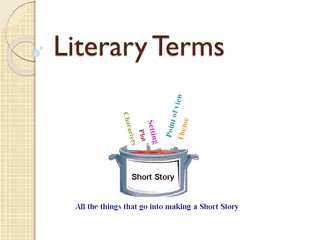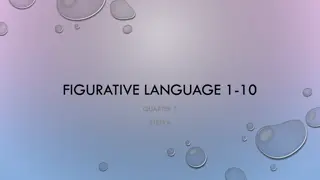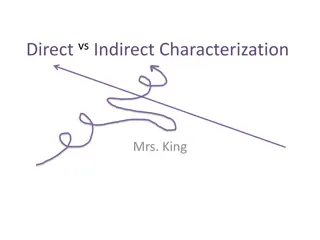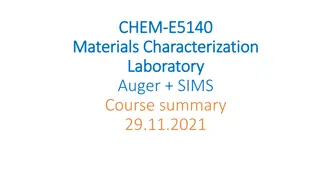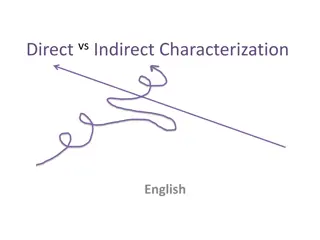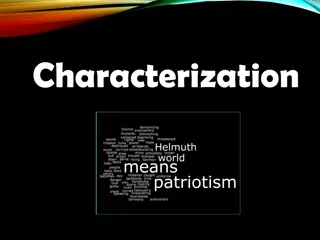Understanding Characterization in Literature
In literature, characterization plays a crucial role in developing characters. Direct characterization explicitly describes a character, while indirect characterization allows readers to infer traits through actions, thoughts, interactions, and appearance. Examples and analysis demonstrate how authors use these techniques to create rich and multidimensional characters.
Download Presentation

Please find below an Image/Link to download the presentation.
The content on the website is provided AS IS for your information and personal use only. It may not be sold, licensed, or shared on other websites without obtaining consent from the author. Download presentation by click this link. If you encounter any issues during the download, it is possible that the publisher has removed the file from their server.
E N D
Presentation Transcript
Types of Characterization Direct characterization: When a person s character is directly explained or stated by an author, etc. Indirect characterization: When you are able to make an educated guess about a person s character by examining specific clues. Example: Suzie is kind and quiet. Example: Suzie never speaks in class.
Indirect Characterization Clues 1. Language: What does the person say? How does s/he speak? 2. Thoughts: What is revealed through the person s private thoughts and feelings? 3. Actions: What does the person do? How does s/he behave? 4. Looks: What does the person look like? How does s/he dress? 5. Interactions With Others: What is revealed through the person s effect on others? How do others feel or behave in reaction to the person?
Direct Characterization: OMAM Example The first man was small and quick, dark of face, with restless eyes and sharp, strong features. Every part of him was defined: small, strong hands, slender arms, a thin and bony nose (Steinbeck 2). Why is this an example of direct characterization?
Indirect Characterization: Example She cried when a goldfish died. On her daily walks, when she spotted an earthworm sizzling on the sidewalk, she picked it up and put it back on the grass. On the other hand, when a large drunk man pushed and cut his way in front of her in a line outside a football game, she grabbed him by the arm and screamed, You just get your fat ass right back where it belongs. Now! 1.Which types of indirect characterization evidence do you see in this excerpt? (language, thoughts, etc.) 2.What kinds of conclusions can you draw about this woman s character based on the evidence above?
Indirect Characterization: OMAM Example George s hand remained outstretched imperiously. Slowly, like a terrier who doesn t want to bring a ball to its master, Lennie approached, drew back, approached again. George snapped his fingers sharply, and at the sound Lennie laid the mouse in his hand (Steinbeck 9). 1. Which types of indirect characterization clues do you see in this excerpt? 2. What conclusions can you draw about George s character based on these clues? 3. What conclusions can you draw about Lennie s character based on these clues?




